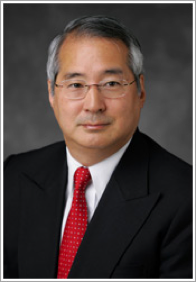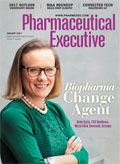Pharma and Biotech Markets: Challenges and Opportunities
With the soaring valuations of companies in the public and M&A markets now seemingly a distant memory, the challenge for pharma and biotech business will be choosing just the right overall mix of M&A, licensing, and partnering.
The last few years have been a positive period overall for both the pharmaceutical and the biotechnology industries on many fronts. Most importantly, the number of new drugs approved and under development has escalated for pharma and biotech companies. Many of these are driven by new methods, such as immuno-oncology, personalized medicine, stem cells, and biologics. We are also witnessing the development of a greater number of drugs that cure diseases rather than just extend life.
The valuations of pharma and biotech organizations in the public and M&A markets soared up until the end of 2014 in part because of these positive developments, but share prices and public valuations have been volatile since then with the drug-pricing controversies.
Public biotech shares have been hit particularly severely since the end of 2014, and as a result, the IPO market began to cool off in the second half of last year. This is creating a difficult equity financing environment for biotech companies, which, in turn, has affected the choices available to biotech firms to continue to fund their companies.
Pharma M&A
Through the third quarter of 2016, 37 deals were completed worth $117 billion, compared to 56 deals completed worth $200 billion in 2015. From a historical perspective, this is a very strong volume of activity for the industry. However, from an annualized point of view, this represents a decrease in the dollar activity compared to last year, and a slight decrease in the number of deals. The main driver of this moderate slowdown has been the absence of the mega tax inversion-related deals that we saw last year. However, the clampdown on the tax rules by the US Treasury Department strongly discouraged those companies pursuing tax inversion deals and killed a number that were in the works as of the end of last year.
In part because of this action, there were fewer mega deals, with only two large deals completed, the $31 billion acquisition of Baxalta by Shire and the $40.4 billion acquisition of Allergan’s generics business by Teva. Drugmakers are acting as both buyers and sellers, forming strategic alliances and swapping as they shore up their core businesses, exit non-core units, and use or seek tax inversion advantages.
As of September 30, 2016, the value of the deals announced but not closed was $7 billion (20 deals), a solid number of agreements, but a weaker dollar volume in the pipeline. The pipeline was $240.4 billion (16 deals) at the end of December, but the massive Pfizer/Allergan merger was cancelled and took a large dollar amount off the table as a result.
Biotech M&A
Biotech M&A activity has almost always been modest historically, with small spurts of activity from time to time.
Through the third quarter of 2016 there were 29 biotech M&A deals completed worth $14 billion, versus 31 deals worth $19 billion completed in 2015. 2016 activity is on track to exceed 2015 in terms of the number of deals. The dollar volume trajectory is less clear.
This pick-up in activity is partly due to the major dropoff in biotech IPOs since the later part of last year as the market has turned against biopharma companies. Through the third quarter, only 22 IPOs have been completed this year compared to 61 for all of last year and 72 the year before. On a dollar basis, the picture is even more severe with only $1 billion raised in IPOs during the third quarter, compared to $5 billion the year before. Secondary offerings have also been adversely affected. Sealed off from high valuation equity offerings, the biotech companies are less fortunate than they were in 2013, 2014, and most of 2015, when they were able to raise money at high valuations. In many

cases, it is not even an issue of valuation and the biotech companies have not been able to go public at all. As a result, the biotech organizations who are in Phase II and Phase III clinical trials, where the cash consumption is high, have been forced to either sell or to partner in order to deal with their shortage of cash.
The pipeline of M&A deals as of September 30, 2016 was weak, as the value of deals announced but not closed was very modest at only $600 million on only one deal. However, the movement has picked up, as biotech companies are being picked off as acquisition candidates. There has been a litany of firms who have announced that they are “exploring their strategic alternatives.”
Outlook: Pharma M&A
Young & Partners expects Pharma M&A activity in 2016 to fall modestly in terms of numbers of deals and more significantly in terms of dollars. The shutdown of the large inversion deals contributed to the dollar slowdown.
However, volume will still be significant in 2017 and beyond, driven by the restructuring and strategic needs of the pharma companies and the residual impact of what has been a feeding frenzy. This is being fueled by the massive business restructuring that is happening in pharma and the consolidation that is occurring both on the generic and non-generic sides of the business.
Pharma companies are modifying their business portfolios to focus on leading positions and to exit weaker positions, and non-core and mature/established products, to search for growth, to attempt to replace lost or soon-to-be-lost revenues, and to drive for scale and cost reduction through consolidation.
Outside of M&A, the need to fill the shrinking drug pipeline is also facilitated by in-licensing arrangements and the formation of partnerships and joint ventures involving both pharma and biotech companies.
Therefore, in spite of the headwinds from the current ruckus about drug pricing, we believe there will be strong pharma M&A volume ahead of us, but moderately curtailed on a dollar basis by the inversion rules now in place.
Outlook: Biotech M&A
The primary biotech M&A theme has been pharma and big biotech acquisitions of biotech companies for pipeline enhancement.
The most promising biotech companies over the previous three years were able to go public first and attract significant interest and high prices later. The surge

in IPOs gave biotech companies more flexibility as to whether and when they exit via a sale. However, the recent slowdown in IPOs will drive many companies to either sell themselves or raise funds via partnering deals or discounted private placements.
Therefore, M&A volume and partnering deals will likely increase significantly in 2017, but still be well below that of the pharma industry.
Implications for senior management
For ethical pharma companies, there will continue to be a wide variety of tools to acquire revenues and pipeline drugs, but the valuations are challenging, particularly for promising drugs in late stage clinical trials and for companies with strong products.
The challenge will be to pick the right overall mix of M&A, licensing, and partnering to accomplish corporate strategic goals and defend and deliver shareholder value.
The generic pharma companies will continue to face a number of industry challenges. This will result in a continuation of the current industry consolidation and selective strategies around diversification.
For biotech companies, public and private, the future is exciting from the drug development side, but troubling on the private funding, IPO, secondary equity financing, and M&A fronts.
Time will tell whether the very public attack on drug pricing will ease up and/or force changes in the industry.

Peter Young is President and Managing Director, Young & Partners, Life Science Investment Banking. He can be reached at pyoung@youngandpartners.com

Cell and Gene Therapy Check-in 2024
January 18th 2024Fran Gregory, VP of Emerging Therapies, Cardinal Health discusses her career, how both CAR-T therapies and personalization have been gaining momentum and what kind of progress we expect to see from them, some of the biggest hurdles facing their section of the industry, the importance of patient advocacy and so much more.